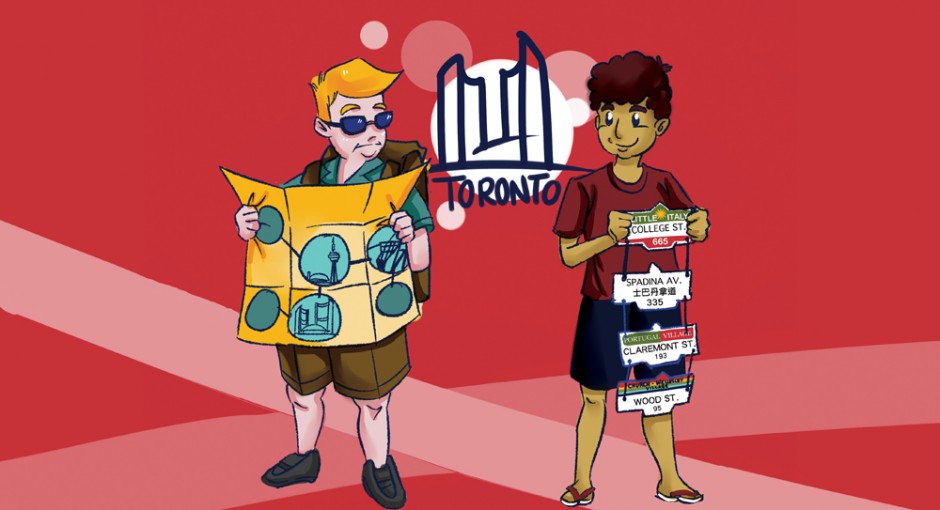Ask ten people in Toronto where they’re from, and prepare yourself for 10 different answers. In a city where you can walk through several cultural districts in only a few blocks, and 50 per cent of residents were born elsewhere, this cosmopolitanism isn’t surprising. What is notable, however, is that people often don’t directly associate themselves with the city.
Toronto’s identity is a subject of much discussion, but so far no one has been able to make a snazzy slogan or singular characteristic stick to our city and put us on the proverbial map. You can visit the Big Apple, Sin City, or the City of Love — or you can visit Toronto, period.
 New York City is the cultural capital of the world; Paris is teeming with art and historical significance; Toronto’s character is not as clear-cut. The lack of a collective identity in Toronto inspires nostalgia for the places people came from and ambivalence about the future. This ambiguity is particularly frustrating for students who are desperate to fit in in a place where there is no mould.
New York City is the cultural capital of the world; Paris is teeming with art and historical significance; Toronto’s character is not as clear-cut. The lack of a collective identity in Toronto inspires nostalgia for the places people came from and ambivalence about the future. This ambiguity is particularly frustrating for students who are desperate to fit in in a place where there is no mould.
Because Toronto is such a mosaic of people, places, and cultures, we have to work that much harder than a city with lessdiversity to establish an identity. How do we form a definition for the most multicultural city in the world without excluding anyone or anything? There is a desire for a clearly defined identity, but it is complicated by the costs of attaining one.
Toronto desires something to cling to — an inclusionary definition that will make people feel as if the city is oriented in the context of other major global cities, or a pinpointed feature to draw people to it. The CN Tower, which is now pretty much irrelevant (thanks, Dubai), fails to serve this purpose, as do Casa Loma, City Hall, or all the other sights that tourists amble by before hopping back on their City Sight Seeing Toronto bus. What genuinely defines Toronto are the little boroughs and neighbourhoods that make it unique — the distinct corners of the city that appear disjointed at first glance, but come together to make up an alluring whole.
Ironically, Toronto’s identity is its constant identity crisis — the city refuses to be defined by one word or single characteristic because it cannot be contained. Toronto’s diverse constituents animate the streets of Kensington Market, Little Portugal, Greek Town, the Annex, the Junction, Baldwin Village, and so on. It’s not the skyline, the museums, or the lake that make this city special — though they certainly add to the ambiance — it’s the discord and the instability of the neighbourhoods and the architecture, the multiplicity of cultures, and the difficulty of attempting to pin it all down.
